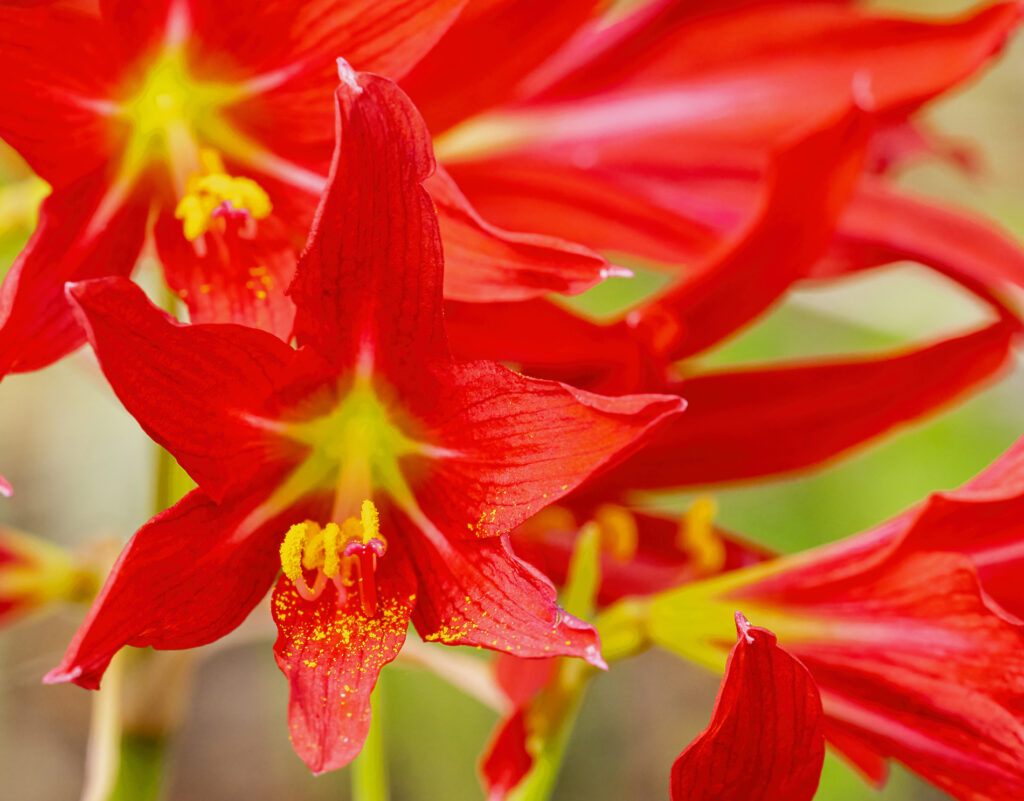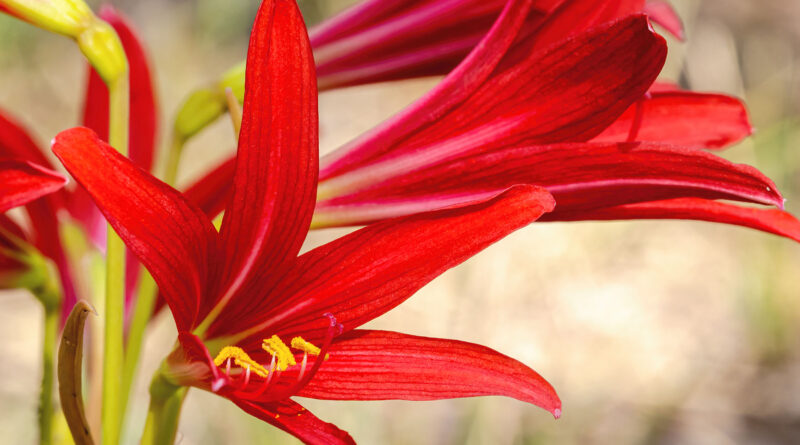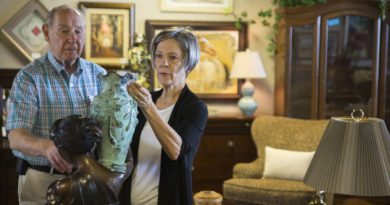Oxblood Lily a Central Texas gem
By AMY ROGNLIE | Photo courtesy of JASON DECKMAN, FME News Service
Let me tell you a story. Many years ago, a German immigrant named Peter Heinrich Oberwetter settled in Central Texas. Comfort, Texas, to be exact. Comfort is between Fredericksburg, Boerne and Kerrville, not far from San Antonio. It was founded in 1854 by German immigrants on the western end of the Texas-German belt and many residents of the town today are descendants of those same free-thinking Germans.
Anyway, Mr. Oberwetter was a plantsman by trade. Sometime in the 1850s, he imported Oxblood Lily bulbs from Argentina and began growing them to sell.
The bulbs naturalized well and became very popular in Central Texas. Folks planted them around their homesteads to bring a splash of color after the long, hot summers, and even now, the Oxblood Lily is more common in the Germanic heritage areas of Central Texas. They are especially common around old homesteads throughout areas from Little River-Academy to Brenham and as far as Austin.
Oxblood lilies (Rhodophiala bifida) are also called Schoolhouse Lilies because their bright red blooms appear around the time that school starts in the fall. Some folks call them “Hurricane Lilies” because their bloom time coincides with the hurricane season in the South.
Whichever name you know them by, these hardy bulbs are winners for Texas gardens.

Often confused with the Red Spider Lily (Lycoris radiate), the Oxblood Lily has the same growth pattern as the Spider Lily but blooms about a month earlier. Both types of lilies bloom on a bare stem in late summer or early fall, then grow foliage during the winter. The foliage lasts during the winter and spring, then dies off when the heat kicks in. They multiply well and never need to be divided, so they are an ideal bulb to plant and forget until they pop up and surprise you with their lovely blooms come September.
When we first moved here from Colorado, I noticed these beautiful red flowers in September and wondered how they would bloom when everything else (including me) seemed to still be gasping in the dry, dusty end-of-summer heat.
A few years ago, I stopped by a house that had a patch of them growing. Turns out that the property belonged to folks about my age, whose great-grandmother had planted the Oxblood bulbs years and years ago. There they were, still blooming away under a pecan tree, swamped with poison ivy and brambles.
“Do you mind if I dig a few out?” I asked. The couple was cordial and told me to help myself — just please watch out for the poison ivy.
I stopped by a few days later with a shovel and a bucket; wearing jeans, socks, tennis shoes and gloves. The flowers were almost gone by then, but I was able to gather a bucketful of bulbs.
I’m pleased to report that I did not get poison ivy, but brought my treasures home and found several places to plant them. I’ve enjoyed their unique flowers every year since, but I think what I treasure even more than the blooms themselves is that I have a little bit of Texas history growing in my garden.




